19.11.2021

Solar Orbiter is returning to Earth for a flyby before starting its main science mission to explore the Sun and its connection to ‘space weather’. During the flyby Solar Orbiter must pass through the clouds of space debris that surround our planet, making this manoeuvre the riskiest flyby yet for a science mission.
Navigating risk
Solar Orbiter’s Earth flyby takes place on 27 November. At 04:30 GMT (05:30 CET) on that day, the spacecraft will be at its closest approach, just 460 km above North Africa and the Canary Islands. This is almost as close as the orbit of the International Space Station.
The manoeuvre is essential to decrease the energy of the spacecraft and line it up for its next close pass of the Sun but it comes with a risk. The spacecraft must pass through two orbital regions, each of which is populated with space debris.
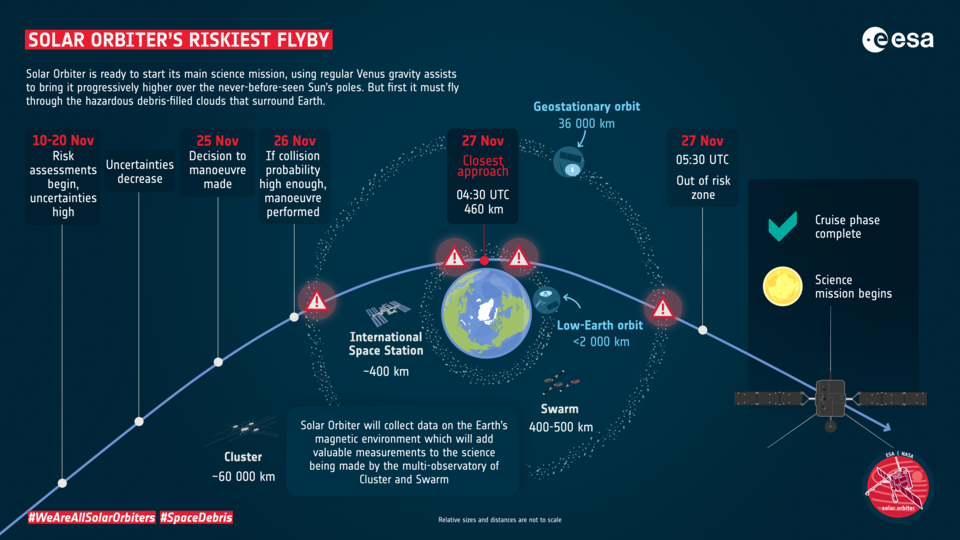
The first is the geostationary ring of satellites at 36 000 km, and the second is the collection of low Earth orbits at around 400 km. As a result, there is a small risk of a collision. Solar Orbiter’s operations team are monitoring the situation very closely and will alter the spacecraft’s trajectory if it appears to be in any danger.
Earth science opportunity
On the plus side, the flyby offers a unique opportunity to study the Earth’s magnetic field. This is a subject of intense interest because the magnetic field is our atmosphere’s interface with the solar wind, the constant ‘wind’ of particles given off by the Sun. Not only can particles from the solar wind penetrate the magnetic field and spark the aurora in our skies, but atoms from our atmosphere can also be lost into space.
The details of these interactions are being studied by two ESA missions: Cluster’s four satellites at 60 000 km in altitude and Swarm’s three spacecraft at 400 km. Multiple spacecraft are needed to break the so-called space-time ambiguity. This is the name given to the uncertainty over whether a change has taken place because a spacecraft has flown into a different region with different conditions (a change in space) or is flying through a region that changes its conditions (a change in time).


Access the video
Solar Orbiter’s flyby offers a unique opportunity to take even more data. It will sweep into the Earth’s magnetic field from out beyond Clusters orbit, approach Swarm’s orbit at closest approach and then fly back out again. This will provide even more data points from which to reconstruct the condition and behaviour of Earth’s magnetic field during the flyby.
“This flyby is exciting: seeing what Solar Orbiter sees in our part of space, and how that compares to what we are seeing, and if there are surprises, what are they?” says Anja Strømme, Swarm Mission Manager.
Cruise phase complete
The flyby marks a major milestone for Solar Orbiter. From its launch in February 2020 to July of that year, the spacecraft was in its commissioning phase, during which the scientists and engineers tested out the spacecraft and its instruments. From July 2020 to now, Solar Orbiter has been in the cruise phase. During this time, the in-situ instruments have been taking measurements of the solar wind and other conditions around the spacecraft, while the remote sensing instruments designed to look at the Sun have been in their extended calibration and characterisation mode.
Despite Solar Orbiter not yet being in full science mode, a lot of science has been produced.
“Scientifically, this exceeded our expectations by a large margin,” says Daniel Müller, Solar Orbiter Project Scientist. He explains that an upgrade to the ESA Ground Station Network allowed Solar Orbiter to send more data than expected back to Earth, and the mission’s scientists have been quick to take advantage. More than fifty papers detailing Solar Orbiter’s cruise phase science results are to be published in December by the journal Astronomy & Astrophysics.
Closer to the Sun
Now, however, it is time to start operating the two sets of instruments together as the mission shifts into the main science phase, and the anticipation is palpable. In March, Solar Orbiter will make a close pass to the Sun, called perihelion. Its first perihelion took place in June 2020, with the spacecraft closing to 77 million kilometres. This time, Solar Orbiter will draw to within 50 million kilometres – providing a significant boost to the science that can be done.
“This will be at a third of the distance between the Sun and Earth. So compared to all the interesting high resolution images that we've already gotten everything now will be zoomed in by about a factor of two,” says Daniel.
This includes new views of the enigmatic ‘campfires’ that Solar Orbiter saw at the first perihelion. The campfires could hold clues about how the Sun’s outer atmosphere has a temperature of millions of degrees, while the surface has a temperature of thousands – which seemingly defies physics because heat should not be able to flow from a colder to a hotter object.


Access the video
And while Solar Orbiter is not going as close to the Sun as NASA’s Parker Solar Probe, this is by design because it allows Solar Orbiter to not only measure what is happening in the solar wind, but to also carry telescopes that can look at the Sun without being destroyed by the heat. The two data sets can then be compared to link activity on the Sun’s surface to the space weather around the spacecraft.
“This linkage science is what I find most exciting,” says Yannis Zouganelis, Solar Orbiter Deputy Project Scientist.
Observing challenge
But before any of this takes place, Solar Orbiter must complete its flyby of Earth. And this presents an opportunity for eagle-eyed sky watchers to bid a final farewell to the spacecraft before it heads forever into deep space.
In the moments leading up to closest approach, skywatchers in the Canaries and North Africa could catch a brief glimpse of the spacecraft speeding through the sky. It will be travelling at about 0.3 degrees per second, which is just over half the apparent diameter of the Moon every second. For most observers it will be too faint to spot with the unaided eye, and too fast for telescopes to track, so binoculars should provide the best chance of catching a glimpse.
When Solar Orbiter re-emerges from the Earth’s shadow it will be on course for its rendezvous with the Sun and the never-before-seen solar polar regions. The science phase of this ambition mission will have begun.
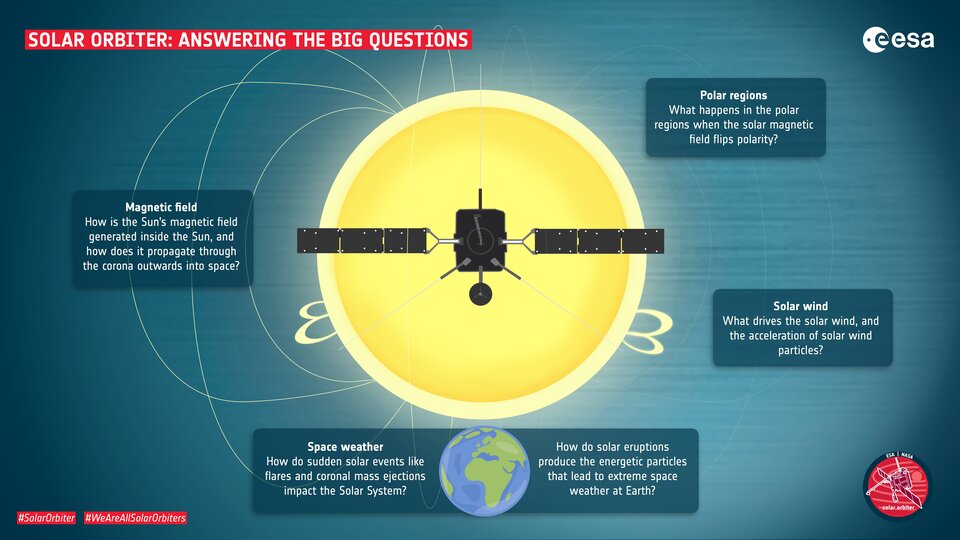
Quelle: ESA
----
Update: 26.11.2021
.
ESA's riskiest flyby

In brief
The chance that ESA’s Solar Orbiter spacecraft will encounter space debris during its upcoming Earth flyby is very, very low. However, the risk is not zero and is greater than any other flyby ESA has performed. That there is this risk at all highlights the mess we’ve made of space – and why we need to take action to clean up after ourselves.
In-depth
On 27 November, after a year and eight months flying through the inner Solar System, Solar Orbiter will swing by home to ‘drop off’ some extra energy. This will line the spacecraft up for its next six flybys of Venus. These final gravity assists will hone and tilt Solar Orbiter’s orbit, enabling the heat-protected probe to capture the first-ever direct images of our star’s poles, and much more.

How risky? It’s all relative
Before we worry too much, let’s start by pointing out that the chance of Solar Orbiter being struck by debris is very, very, very small. Earth observation missions spend their entire life in low-Earth orbit – the most debris-filled region of space, and while they perform ‘collision avoidance manoeuvres’ a few times per year, Solar Orbiter will spend only a few minutes here as it heads towards closest approach and then leaves again, onward to Venus.
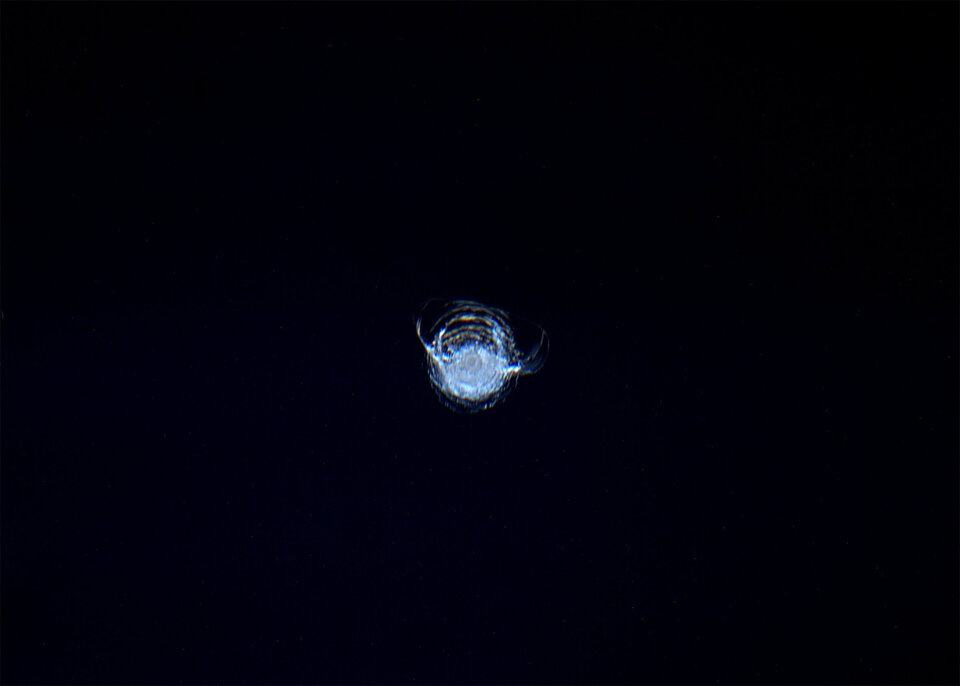
However small the risk, collisions with debris at low-Earth altitudes do happen. In 2016, a solar panel on ESA’s Sentinel-1A spacecraft was struck by a particle thought to be less than five millimetres in size. Despite its size, its high relative speed meant it still damaged an area 40-cm across, leading to a small reduction in onboard power and slight changes to the orientation and orbit of the satellite. Hundreds of millions of debris particles this size are currently in orbit.
Hubble, the NASA/ESA Space Telescope, has spent 31 years in Earth orbit at an altitude of around 547 kilometres. In that time, it has witnessed the skies fill with satellites and debris and felt the impact, as its own solar panels have been bombarded and degraded by small debris particles.
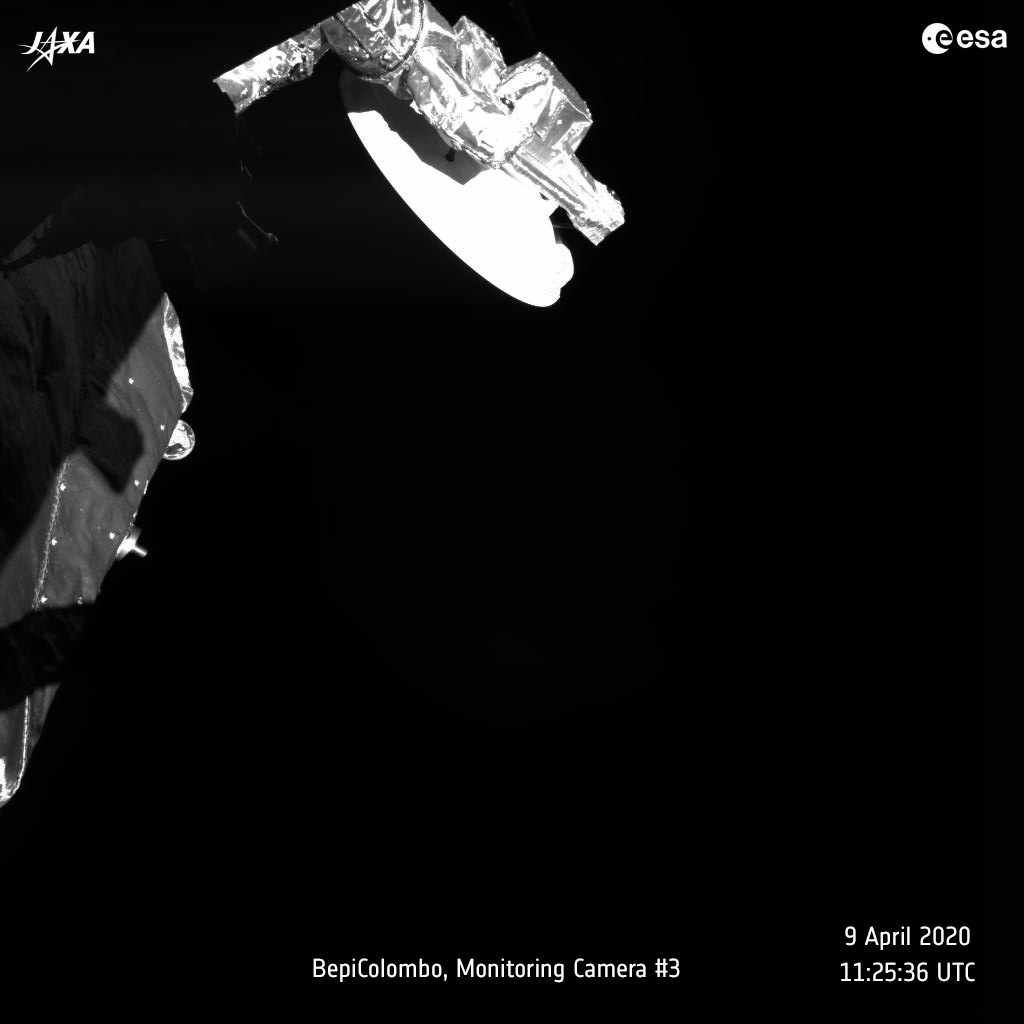
While the risk to Solar Orbiter during its upcoming Earth flyby is small, it’s still “non-zero”. It didn’t face this risk as it swung by Venus, nor did ESA’s Space Debris Office have to perform collision risk analysis as BepiColombo recently zipped by Mercury, or when Cassini–Huygens flew by Jupiter.
Past Earth flybys, for example, when Cassini/Huygens flew by Earth in 1999, as Rosetta returned three times in 2005, 2007 and 2009, and Juno swung by in 2013, there were fewer satellites, fewer debris and no ‘mega constellations’ in orbit. A flyby of Earth today, while still safe, is riskier than it used to be.
Interplanetary collision avoidance
ESA’s Space Debris Office recently began risk assessments based on Solar Orbiter’s trajectory and the expected position of catalogued objects in orbit around Earth, providing a collision probability for any specific close approaches.
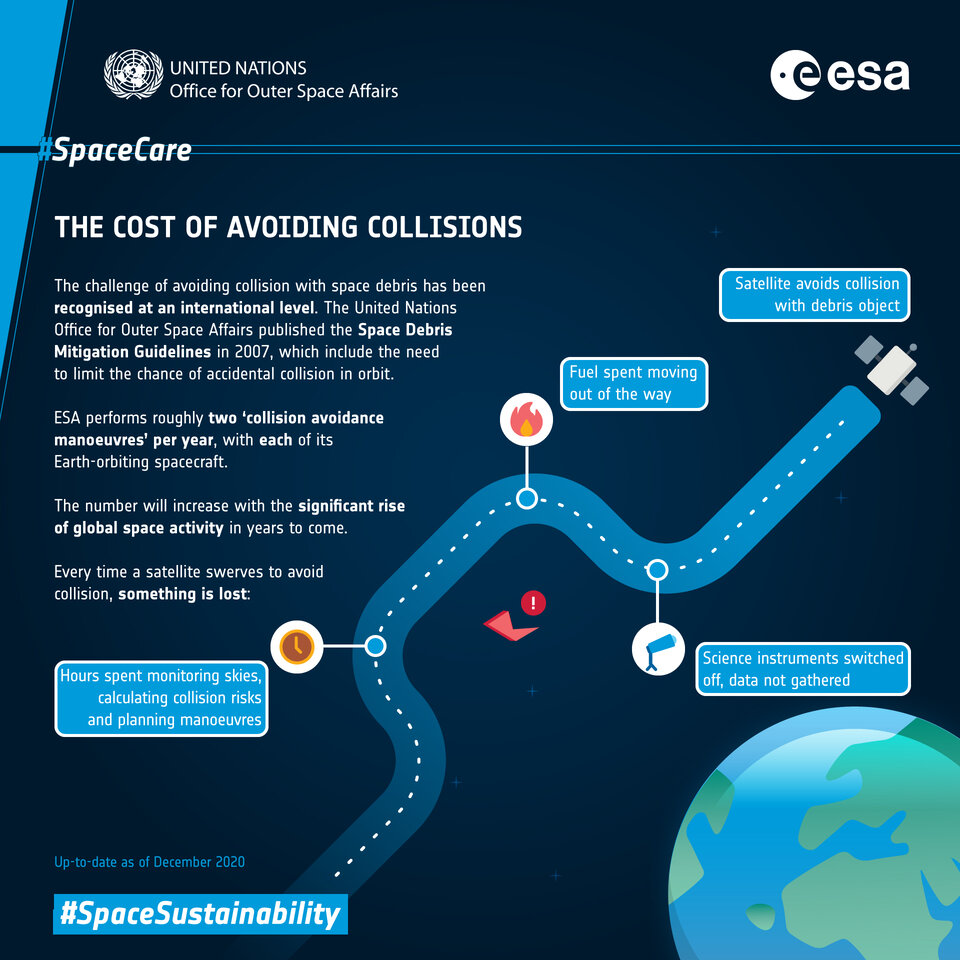
In these cases, uncertainty begins high but narrows as the orbits of objects evolve. As the moment of close approach gets nearer, our observational data improves, reducing the uncertainties in the location of objects involved. As is nearly always the case, the more we know about the position of two objects, the surer we are that they will safely pass each other.
Sometimes, however, as time passes and a close approach beckons, the chance of collision increases. For each of the Sentinel missions in Earth orbit, a collision avoidance manoeuvre is performed about once every five to six months when the ‘miss distance’ with another object is considered too risky.
For Solar Orbiter, in the unlikely scenario that a manoeuvre is required to get it out the way of a potential impact, the decision would be made on Thursday 25 November, two days before close approach. It would be performed on Friday 26 November, about six hours before close approach.
All clear?
Once Solar Orbiter comes up from low-Earth orbit and passes above geostationary orbit it is out of the risk zone. This should be about one hour after its minimum distance to Earth.
As the mission zooms off, flying with ever-so-slightly less energy than it arrived with, it and its mission teams will never have to consider space debris again. For missions still in orbit, and for those yet to be launched, the situation in space is becoming ever more worrisome.

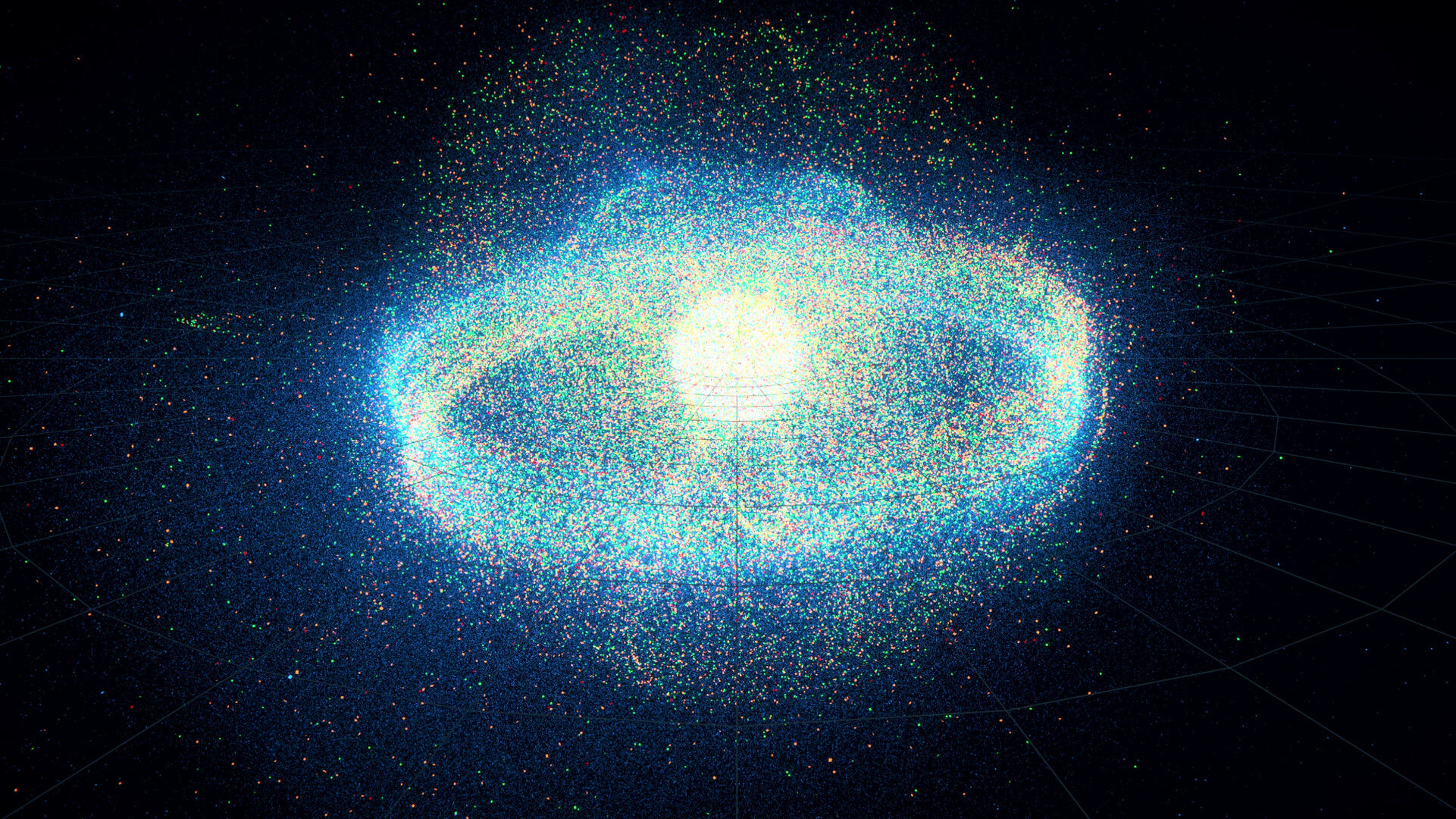
Access the video
After decades of launches, with little thought of what would be done with satellites at the end of their lives, our space environment has become littered with space debris. While Solar Orbiter zips by, passing just momentarily through Earth’s orbital highways, it’s an important reminder that the space debris problem is unique to Earth, of our own making, and ours to clean up.
Find out how ESA is working to prevent further debris from being created and clean up what is already out there.
Quelle: ESA
